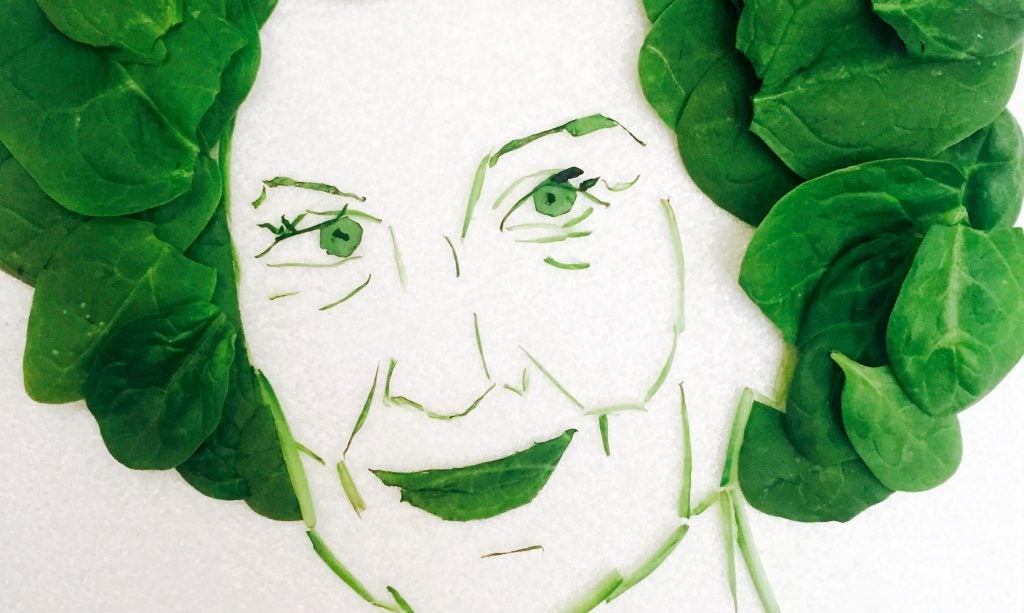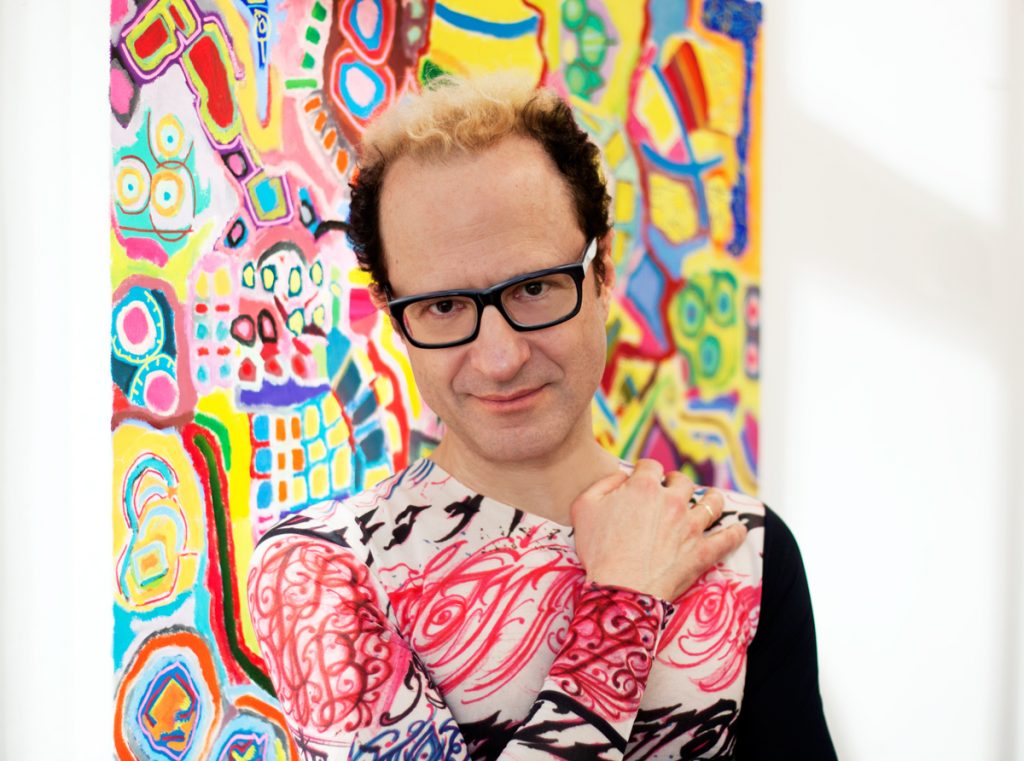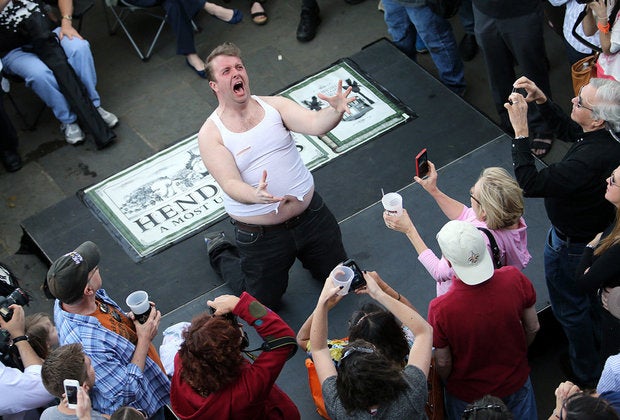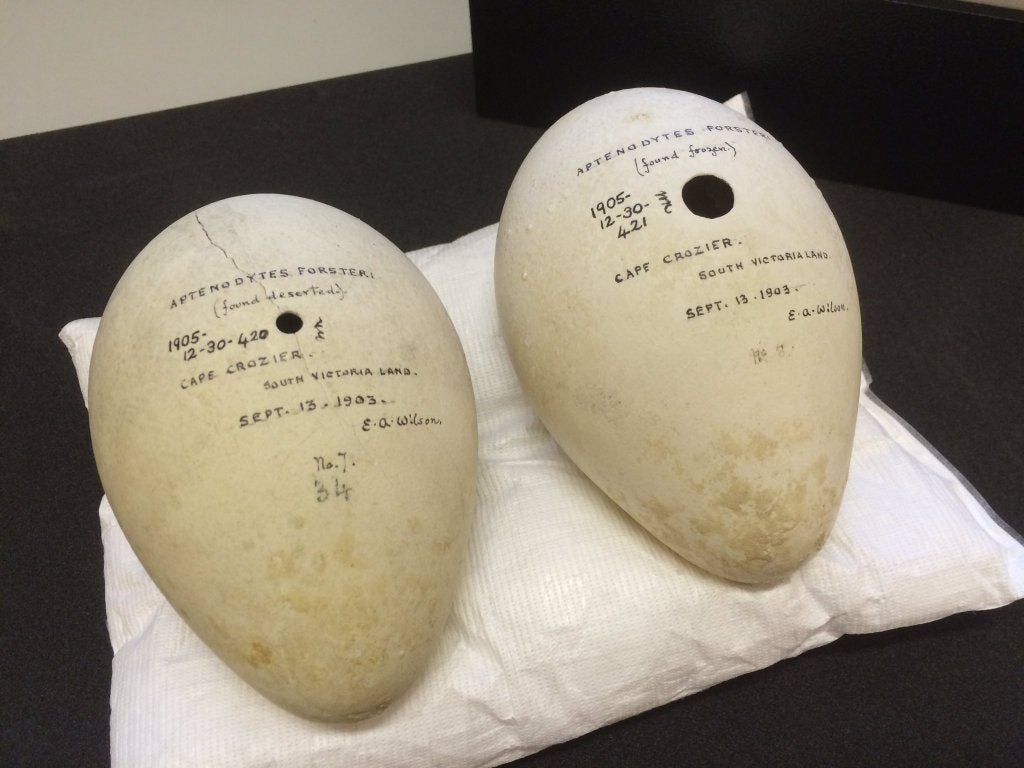Excerpts and curios from around the web:
For Christian Kjelstrup, author of The Cookbook of Disquiet, it all started when he glimpsed Fernando Pessoa in a pan of sausages. A different kind of man might have backed away from such beauty; yes, a different kind of man—and this man is all of us—might have flung the pan of sausages against the wall and screamed for the gods to play their games elsewhere. But that’s what separates the fools from Kjelstrup, who went on to cast more literary portraits in edibles, the photographs of which have since been collected into a book.  According to a profile of Kjelstrup’s work in the Guardian earlier this year, “the portraits can only be made ‘using an ingredient which rhymes on or at least is reminiscent of the name of the writer.’ So there’s Honning Makrell, created using honey and mackerel. James Juice, Cornac McCarthy and Leo Toastoy, amongst many others.” Portrait-pun suggestions from readers have been pouring in ever since, and Kjelstrup has at last bent to the will of the people by creating what is perhaps the fairest portrait of them all: John Milton arranged in Stilton cheese, or as it’s properly titled, John Stilton. Said Kjelstrup, “It was very hard to pick one name out of all the suggestions, but—speaking of cheese—I fell in love with John Stilton. In Norway, Milton and stilton are treated the same: both are enjoyed only by connoisseurs. The difference between John Milton and John Stilton is the latter is fat, greasy and sticky. I had a hard time making him. The fridge in my office now serves as his temporary mausoleum; I suspect his odor will survive him, perhaps even the fridge.”
According to a profile of Kjelstrup’s work in the Guardian earlier this year, “the portraits can only be made ‘using an ingredient which rhymes on or at least is reminiscent of the name of the writer.’ So there’s Honning Makrell, created using honey and mackerel. James Juice, Cornac McCarthy and Leo Toastoy, amongst many others.” Portrait-pun suggestions from readers have been pouring in ever since, and Kjelstrup has at last bent to the will of the people by creating what is perhaps the fairest portrait of them all: John Milton arranged in Stilton cheese, or as it’s properly titled, John Stilton. Said Kjelstrup, “It was very hard to pick one name out of all the suggestions, but—speaking of cheese—I fell in love with John Stilton. In Norway, Milton and stilton are treated the same: both are enjoyed only by connoisseurs. The difference between John Milton and John Stilton is the latter is fat, greasy and sticky. I had a hard time making him. The fridge in my office now serves as his temporary mausoleum; I suspect his odor will survive him, perhaps even the fridge.”
Listen, friend: circling the planet in a spaceship for 340 consecutive days isn’t all zero-gravity backflips and tasty tubes of meat paste. Take it from former astronaut Scott Kelly, who holds the record for the most time logged in outer space: “During my time in orbit, I lost bone mass, my muscles atrophied, and my blood redistributed itself in my body, which strained my heart. Every day, I was exposed to ten times the radiation of a person on Earth, which will increase my risk of a fatal cancer for the rest of my life. Not to mention the psychological stress, which is harder to quantify and perhaps as damaging.” Kelly, who retired from NASA this month, is writing a book about his experience that will debut next year. Endurance, My Year In Space and Our Journey to Mars (Knopf, November 2017) will make a case for why we need space travel while also exploring the bodily hardships endured by astronauts on extended flights.
 “What’s the good of getting a MacArthur genius grant if you can’t go and write a comic book for Marvel?” Ta-Nehisi Coates asked this week on All Things Considered. Coates’s latest project, a reboot of the Black Panther series, follows the adventures of an African king, T’Challa, who possesses superhuman strength and abilities. The much anticipated series aims to breathe fresh life into a character that has long been pushed to the sidelines behind the larger Marvel franchises of Spider-Man, Iron Man, Captain America, et al. “When I was a young person, my introduction frankly into the world of literature and the beauty of words and the beauty of language, occurred through three things. It occurred through the magic of hip-hop, it occurred through the magic of Dungeons and Dragons, and it occurred through the magic of Marvel comic books, so I feel back at home.” Since its release, Black Panther has been gaining attention for another reason, as well: its shift away from the model of flat, hypersexualized female characters that are so often found in mainstream comics. Coates addresses this choice directly in a recent piece for the Atlantic, drawing attention to the reaction of one critic, who writes, “Did Coates just take over the reins of one of the seminal Black comic book characters — a character who sold the 300,000 copies before it ever hit the stands — and center in the plot, in the first issue, a Black lesbian couple? Yes, he did. Did he then have those two women discuss the nature of love AND the nature of democracy in 4 panels? Yes.He.Did.”
“What’s the good of getting a MacArthur genius grant if you can’t go and write a comic book for Marvel?” Ta-Nehisi Coates asked this week on All Things Considered. Coates’s latest project, a reboot of the Black Panther series, follows the adventures of an African king, T’Challa, who possesses superhuman strength and abilities. The much anticipated series aims to breathe fresh life into a character that has long been pushed to the sidelines behind the larger Marvel franchises of Spider-Man, Iron Man, Captain America, et al. “When I was a young person, my introduction frankly into the world of literature and the beauty of words and the beauty of language, occurred through three things. It occurred through the magic of hip-hop, it occurred through the magic of Dungeons and Dragons, and it occurred through the magic of Marvel comic books, so I feel back at home.” Since its release, Black Panther has been gaining attention for another reason, as well: its shift away from the model of flat, hypersexualized female characters that are so often found in mainstream comics. Coates addresses this choice directly in a recent piece for the Atlantic, drawing attention to the reaction of one critic, who writes, “Did Coates just take over the reins of one of the seminal Black comic book characters — a character who sold the 300,000 copies before it ever hit the stands — and center in the plot, in the first issue, a Black lesbian couple? Yes, he did. Did he then have those two women discuss the nature of love AND the nature of democracy in 4 panels? Yes.He.Did.”
“At first glance, Alice Thomas Ellis might not seem an exemplar of Gothic writing,” writes Abbi Geni in a new essay for LARB. Ellis, for those unfamiliar with her work, authored such novels as The Sin Eater, Unexplained Laughter, and Fairy Tale, books that have received more fanfare in Britain than in the United States and typically feature eerie, female protagonists. But as Geni argues, Ellis “deserves more notice outside of Britain, if not for being a stylist or a master storyteller, then at least for what she’s contributed to the same literary tradition we champion in the works of Shirley Jackson. Gothic novels have their own special relationship to evil, and Ellis honors that relationship in all her books. She writes Gothic novels disguised as literary fiction—’high Gothic,’ perhaps. While literary fiction may grapple with the question of whether evil truly exists—whether it comes from within or without—Gothic novels proceed from a different assumption. Ellis never wonders, Are there monsters in the world? To her, that query has already been asked and answered. There are ghouls and demons. There is unexplained laughter. There’s the darkness that lingers long after the story is done.”
In a new interview with The Brooklyn Rail, Hilton Als talks shop with Jarrett Earnest about art, process, and his current exhibition at The Artist’s Institute, One Man Show: Holly, Candy, Bobbie and the Rest. On private selves vs. public selves: “One of the great calamities in American life is celebrity. I’ve seen it make people different. So what interests me is getting underneath the mechanism of public regard, and self-regard, and really seeing what human behavior is and how attention reshapes a certain kind of body—does it fuck them up endlessly? Or not? Where is the innocence out of which most people initially create? Does that get dissipated? It’s almost like the perfect metaphor for the self, for interiority: how authentic can we remain once we are seen, or once we want to be seen?”  On fiction vs. nonfiction: “Now, I am just treating everything as fiction, because I’m distrustful of the imagination, which is what memory is. I prefer to move forward treating the books as novels—let’s say novels about memory. Or a poem, in that no one ever asks a poet if what they’ve written is true or not. I’m a stickler for accuracy, but that doesn’t mean everything I write is a hundred percent true. There is a great emotional truth there, and I’m trying to honor that.” On the relationship between art and intimacy: “You have to learn to write about love in order to write. It’s the most fundamental thing, and if you don’t write about it then you are missing something that is so profound—how could you even carry on? It is a very profound thing to touch another human being. I haven’t had the best luck with it, but it seems to me that staying vulnerable to experience is why we’re here. That means all sorts of weird things, like being responsible for someone else’s soul, which is what it comes down to. So if you’re an artist, and intimacy is the most profound thing, then you have to deal with it, with what it means to love someone. It doesn’t get any deeper than that. If your job as a writer is to convey human emotion and interactions, you can’t skip the intimacy part.”
On fiction vs. nonfiction: “Now, I am just treating everything as fiction, because I’m distrustful of the imagination, which is what memory is. I prefer to move forward treating the books as novels—let’s say novels about memory. Or a poem, in that no one ever asks a poet if what they’ve written is true or not. I’m a stickler for accuracy, but that doesn’t mean everything I write is a hundred percent true. There is a great emotional truth there, and I’m trying to honor that.” On the relationship between art and intimacy: “You have to learn to write about love in order to write. It’s the most fundamental thing, and if you don’t write about it then you are missing something that is so profound—how could you even carry on? It is a very profound thing to touch another human being. I haven’t had the best luck with it, but it seems to me that staying vulnerable to experience is why we’re here. That means all sorts of weird things, like being responsible for someone else’s soul, which is what it comes down to. So if you’re an artist, and intimacy is the most profound thing, then you have to deal with it, with what it means to love someone. It doesn’t get any deeper than that. If your job as a writer is to convey human emotion and interactions, you can’t skip the intimacy part.”
Lead image: “Margaret Spinatwood,” by Christian Kjelstrup.







